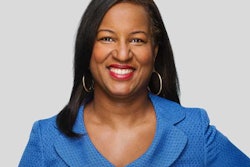The first rule of a North American debate tournament to be held in Vermont this weekend: No men allowed.
Some 150 debaters from 18 schools across the U.S. and Canada will compete in the special tournament, which is designed to be a safe space for women who complain of bias when they debate against men.
Although some men will be allowed to serve as judges, organizers say the tournament at the University of Vermont offers women a chance to hone their speaking and arguing skills and gain confidence and friends without being subject to sexism.
“There is also a lot of sexual predation that happens in the debate community,” said UVM debate director Helen Morgan-Parmett. “The tournament, I think, provides a safe space where people feel they are debating other women, and their bodies aren’t necessarily on display.”
College debating is one of the few intercollegiate competitive activities in which women and men compete directly against one another. While some women do win, the debaters say they have to be that much better than men to overcome bias on the part of many judges. And they point to statistics that show they are less likely to reach the top echelons of the activity.
“Like with a lot of collegiate activities, debate has a tendency to be male-dominated,” said UVM sophomore debater Miranda Zigler of Boston.
The UVM event will be run using the British Parliamentary debating style, in which participants learn the topic they will be debating only 15 minutes before the competition begins. More traditional college debate, known as policy debate, uses a set topic for the entire season and the debaters must be ready to argue for or against. Both formats are judged by a panel.
Collegiate debate began to grow after World War II, and for the first decade or so men and women debated separately. That began to change in the late 1950s and early 1960s but, still, few women signed up, said Dallas Perkins, former debate coach at Harvard University and now spokesman for the National Debate Tournament held earlier this month in Wichita, Kansas.
Women have broken through to the top ranks: Two of the final four debaters at the national tournament this month were women.
Georgetown debate director Mikaela Malsin, whose team lost in the finals this year and who coached one of the women, said she hadn’t heard of the women’s debate tournament. She said college debate is prone to the same sexism and misogyny that pervades American culture, and that far more men than women compete.
“We want it to be more inclusive and more accessible on its own terms rather than retreating or creating a separate space,” Malsin said. “I certainly think there is value to that kind of thing, but, like I said, I don’t think it would catch on quite as much in the policy world for the reason that I think women and people of color primarily want to keep pushing back and continue to elevate or improve the activity from within.”
What has evolved into the North American Women’s and Gender Minorities Debate Championship being held in Burlington this weekend began in Canada in the 1990s. It disappeared for several years but was revived in 2009, said Sarah Sahagian, the program director for the nonprofit group Speech and Debate Canada.
Even though women have made progress, the separate space is still needed, she said.
“I think even when I was a participant, there were women who did well, there were women who won things, but on average, the average female debater did not do as well. Disproportionately, male debaters did better,” she said.
The first women’s debate championship in the United States was held at UVM in 2015. The last two years, it was back in Canada. Organizers now hope it can remain an annual event, alternating between the two countries.
The women at UVM recognize the women-only tournament can make them targets of people who feel they are asking for special treatment, but say it’s good to raise awareness of the issue.
“I think there is just no bad publicity,” said UVM debate coach Stela Braje, “especially if you’re trying to make a point.”















